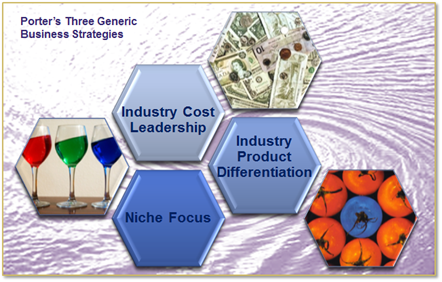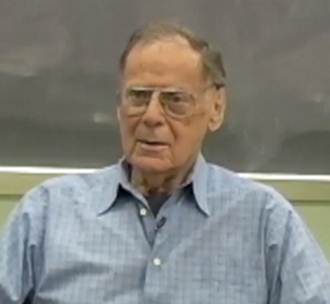Back in August, we met Michael Porter – a professor at Harvard Business School, and an authority on competitive strategy. In a blog called ‘On Competition – Five Forces’ I described his best known ‘Five Forces Model’ and also his model of three sources of competitive advantage:

The Whole Picture?
At a recent seminar, I challenged participants to identify any additional business strategy that can deliver competitive advantage. After all, in my August blog, I did assert that this model is showing its age.
Could a business outcompete rivals with a higher cost product, that does pretty much the same as its competing products, and has no niche focus? The answer takes us into a fascinating debating point, by way of another powerful model with which Porter is closely associated.
Competitive Advantage
Porter’s 1985 book ‘Competitive Advantage’ gives you a pretty thorough précis of his earlier ‘Competitive Strategy’ in Chapter 1 – focusing on the three strategies – and then takes off. Competitive advantage, Porter says, comes from understanding the ‘value chain’. This is the full set of activities that company undertakes, to create value. It is illustrated below.

Competitive advantage is about understanding the Five Forces model and the sources of cost advantage and product differentiation in terms of these nine activities.
The Far End of the Value Chain
The five primary activities form a chain of value-adding processes, supported by the four secondary processes that provide the necessary resources to make the value chain work. Each can be a source of competitive advantage, most obviously through cost differentiation.
I want to focus on Marketing & Sales, and Service. My argument is that a company can differentiate its product – to give it competitive advantage, through these two, without focusing on a niche, delivering a substantively different product, and with no cost leadership.
Marketing, Sales and Service are about Myth-making
 If you can create a compelling narrative about your product, people will want it, to associate themselves with the myth you have created around your brand. My daughter loves ‘Hello Kitty’ – I don’t know why. As far as I can tell, the Hello Kitty brand started life as nothing more than a motif, appearing on a range of products. Now, not just children, but adults too, want goods just because they have the face of a little white cat (with no mouth) on them.
If you can create a compelling narrative about your product, people will want it, to associate themselves with the myth you have created around your brand. My daughter loves ‘Hello Kitty’ – I don’t know why. As far as I can tell, the Hello Kitty brand started life as nothing more than a motif, appearing on a range of products. Now, not just children, but adults too, want goods just because they have the face of a little white cat (with no mouth) on them.
The products are no better, no different (unless you include the motif) and certainly no different functionally, and definitely no cheaper. There is little niche focus beyond, as far as I can tell, females. Hello Kitty thrives in most cultures and at many age groups from 2 to forty, at least.
I think the source of Sanrio’s competitive advantage is nothing more than marketing.
Would I fall for such a ruse?
Of course not. Unlike some grown ups, I would never have Hello Kitty nor any other character on my iPhone case…
‘Hold on Mike, did you say iPhone?’
iPhone certainly has no cost advantage and it now has many competing products that offer the same functionality. And as a niche, iPhone users are pretty hard to define: old and young, across social and cultural spectra…
So how does marketing create competitive advantage?
It seems implausible that three sources of competitive advantage could be all there is. Yet I have come to the conclusion that I haven’t yet found an exception. Despite arguing that marketing is that exception, let me explain.
What does marketing do that creates such loyal followings for Hello Kitty and iPhone (and, indeed, for both – I saw someone with a Hello Kitty iPhone cover, which was the nudge for writing this blog)?
I think the great marketing that Sanrio and Apple create, builds a loyal following for their products. Many people will identify themselves as iPhone users – in a way that others would not identify themselves as Wildfire or Galaxy users. What great companies can do is use marketing and service to create a ‘tribe’ of people who are loyal to their brand – or to a part of their brand.
What this relatively new form of marketing is doing is building a niche focus that is defined by the products and services of the company.
So, Porter was right after all. Now we need to look at this concept of ‘tribes’. More next week.
Management Pocketbooks you might enjoy
 Tomorrow is National Stress Awareness Day, so let’s take a look at a valuable idea from The Stress Pocketbook.
Tomorrow is National Stress Awareness Day, so let’s take a look at a valuable idea from The Stress Pocketbook.





 Tom Peters has come to speak and write in demotic, didactic, explosive language that makes it hard for some to take him seriously. Academic and dry, he is not. So many criticise what appears to be his flippancy and glibness. However, he has been way ahead on just about every management and organisational trend in my lifetime. [21 years? Ed]
Tom Peters has come to speak and write in demotic, didactic, explosive language that makes it hard for some to take him seriously. Academic and dry, he is not. So many criticise what appears to be his flippancy and glibness. However, he has been way ahead on just about every management and organisational trend in my lifetime. [21 years? Ed]





 If you can create a compelling narrative about your product, people will want it, to associate themselves with the myth you have created around your brand. My daughter loves ‘
If you can create a compelling narrative about your product, people will want it, to associate themselves with the myth you have created around your brand. My daughter loves ‘



 For general negotiating skills, I am yet to be persuaded that any book has overtaken ‘
For general negotiating skills, I am yet to be persuaded that any book has overtaken ‘


